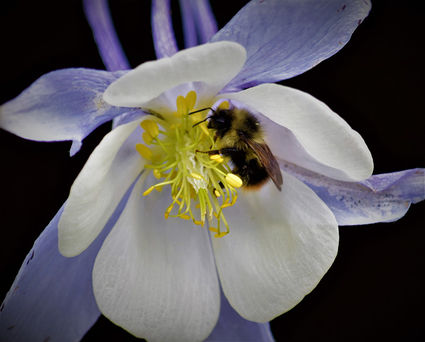Bees are an important part of gardening season
June 21, 2018

Shana Neesvig
BUSY BEES, the dominate food crop pollinator in the world, help produce one-third of the food humans consume each day. Honey bees will only produce 1/12 of a teaspoon of honey in its life, and collectively must visit 2 million flowers to produce 1 pound of honey.
Roughly a month ago, avid gardeners in the area were busy working the soil and planting those seeds. As nature takes its course, gracing the land with ample rain and sunshine, we are witnessing the beginning of a plentiful season ... hopefully.
A lot takes place from planting to harvest. Many of us tend to forget the role that insects take to provide us with food. Specifically, I am talking about those little, yellow and black, fuzzy bundles of energy we are seeing as of late. Please do not fret and do not squash!
According to Montana agricultural statistics, Montana is 4th in the nation for overall honey production, having provided 13.3 million pounds of honey, with an average price of $1.64 per pound, in 2012. In addition to providing the sweetness of honey to our diets, bees are responsible for pollinating many of our garden crops.
Montana State University (MSU) posted an online article by Ruth O'Neill, Director of Bees in the Big Sky, on the importance of bees for agriculture. "Knowing which plants require pollination can help you monitor bee abundance as well as seed and fruit set in your garden, and help you improve the diversity of your gardens to benefit bees and other pollinators," she commented.
Fertilization occurs when pollen is transferred from an anther (male part) to a stigma (female part) of a flower. This is pollination and must occur in some plants, though not all, to set seed and/or produce the edible fruit.
O'Neill states that bees are the primary pollinator for apples, cantaloupe, cherries, cucumbers, gooseberries, huckleberries, peaches, pears, plums, pumpkin, raspberries, squash (summer and winter), strawberries, sunflowers, and watermelon. These plants must be pollinated to grow fruits, the parts of these plants we consume.
Another form of pollination is buzz-pollination. The simple act of a bee vibrating its wings in proximity to flowers will shake pollen off the anther and pollinate the flower, like using salt and pepper shakers. Eggplant, huckleberry, sweet and chili peppers and tomatoes are all pollinated through this sort of pollination mechanism.
It would be in our best interest to take care of these small creatures, as their impact on our world is great. Visit bigskybees.org, a website hosted by MSU and O'Neill, which contains a plethora of information on the world of bees. Here, you will find information on bees in agriculture, the effects of pesticides on bees and whether pesticide use is necessary, vegetables that require pollination, bee-friendly flowers, housing honey, solitary and bumble bees, beekeeping tasks and pests and diseases of honey bees.
When harvesting your garden this year, please remember to thank the bees who made it possible. Take care of them, they certainly take care of us.






Reader Comments(0)